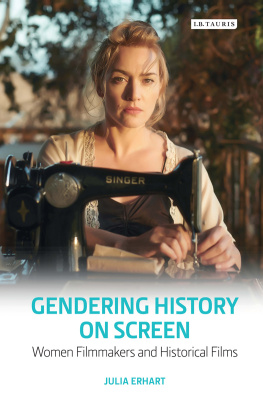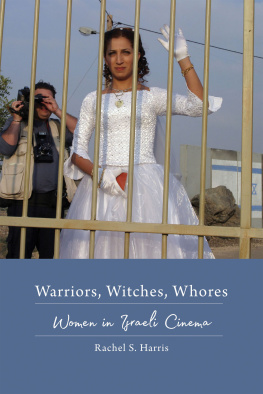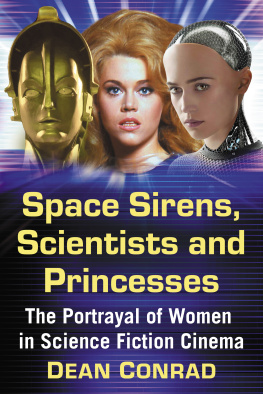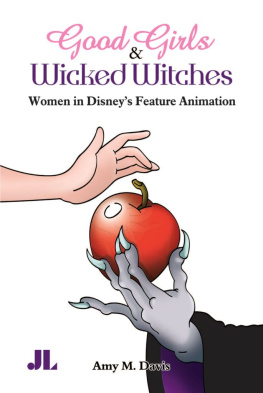Reel Women
An International Directory of
Contemporary Feature Films about Women Jane Sloan

SCARECROW PRESS, INC. Published in the United States of America
by Scarecrow Press, Inc.
A wholly owned subsidiary of
The Rowman & Littlefield Publishing Group, Inc.
4501 Forbes Boulevard, Suite 200, Lanham, Maryland 20706
www.scarecrowpress.com Estover Road
Plymouth PL6 7PY
United Kingdom Copyright 2007 by Jane Sloan
All rights reserved. No part of this publication may be reproduced, stored in a retrieval system, or transmitted in any form or by any means, electronic, mechanical, photocopying, recording, or otherwise, without the prior permission of the publisher. British Library Cataloguing in Publication Information Available
Library of Congress Cataloging-in-Publication Data Sloan, Jane, 1946 Reel women : an international directory of contemporary feature films about women / Jane Sloan. p. cm.
Includes indexes. Filmography: p. ISBN-13: 978-0-8108-5738-4 (hardcover : alk. paper) ISBN-10: 0-8108-5738-3 (hardcover : alk. paper) ISBN-13: 978-0-8108-5894-7 (pbk. paper) ISBN-10: 0-8108-5894-0 (pbk. : alk. paper) 1. paper) 1.
Women in motion pictures. 2. Women in motion picturesCatalogs. I.Title. PN1995.9.W6S63 2007
791.43652042dc22 2006028794  The paper used in this publication meets the minimum requirements of American National Standard for Information SciencesPermanence of Paper for Printed Library Materials, ANSI/NISO Z39.48-1992.
The paper used in this publication meets the minimum requirements of American National Standard for Information SciencesPermanence of Paper for Printed Library Materials, ANSI/NISO Z39.48-1992.
Manufactured in the United States of America. For my nieces,
Mary, Catherine, Elizabeth, Lily,
Janet, Linda, Allison, Jane,
Anastasia, Linda, and Nancy
CONTENTS
PREFACE
PURPOSE
The purpose of this reference book is to list feature-length films with an adult female protagonist (or group of females) around whom the story evolves or from whose point of view the story is told.
It is well known that a vast majority of central characters in fictional film narratives are men, and this list is first intended to provide some means for identifying and grouping those films centered on women. Secondarily, it is intended to fill the gap created by the two most common approaches to compiling a list of cinema about women, one relegating the topic to narrow subject matter such as domestic roles or romance, and the other taking the subject to be coincident with the work of women filmmakers. Both imply an ideological underpinning at the same time that they limit the number of films considered. My original goal was to list all such films produced after 1960, but comprehensiveness has proved elusive, partly because the dominance or core importance of a woman character in a film can sometimes be determined only by seeing it. Also, I discovered that synopses frequently had a different frame of reference than I, sometimes underrepresenting a character that I found important to the film. Although there are inevitably titles missingand titles included that, had I seen the films, might not have been includednonetheless, this list presents a larger number of films about women than one will find listed in any other source.
The list is also characterized by the presence of a significant number of important films that remain inexplicably obscurenot seen, not distributed, and virtually unknown outside their niche area studies or genre markets, where they are highly valued. The filmography both updates and expands the feature-film coverage in Kaye Sullivans two-volume Films For, By, and About Women (Scarecrow, 1980, 1985). It is complementary to existing reference works that provide access to names, such as The Womens Companion to International Films (Virago, 1990), edited by Annette Kuhn and Susannah Radstone; Women Film Directors: An International Bio-Critical Dictionary (Greenwood, 1991), by Gwendolyn Foster; and The St James Women Filmmakers Encyclopedia (Visible Ink, 1999), edited by Amy Unterberger. Effort was made to include all films that have gained reputation through awards, exposure in international film festivals, revival in repertory theaters, positive reviews, educational use, and wide commercial release. Special care has also been taken to include films by well-known directors that fill the subject criteria.
ACKNOWLEDGMENTS
I want to extend very special thanks to Ronald Gottesman and, especially, Sumiko Higashi, who validated this project ten years ago by providing guidance in its crucial initial phase.
ACKNOWLEDGMENTS
I want to extend very special thanks to Ronald Gottesman and, especially, Sumiko Higashi, who validated this project ten years ago by providing guidance in its crucial initial phase.
Thanks also to John Belton, Sandy Flitterman-Lewis, and especially Maggie Humm for providing comments on its content and organization over the last three years. Catherine Geddis and Ferris Olin acted as indexing consultants, challenging and improving what I consider to be one of the most important parts of the filmography, the Index to Fictional Subjects. Jan Reinhart provided translating support in several languages. Stephen Ryan, editor at Scarecrow Press, provided detailed and very helpful feedback on the filmography. Special thanks are due to Robert Litz, Jan Schmidt, and Janet Martin for commenting on related background work, as well as to Marilyn Campbell and Richard Porton for commenting on the introductory survey. Very special thanks to Sin Murray, who watched and discussed many of these films with me while opening up her home to my frequent visits.
To Chantal Lyant, Regine Boulet, Julie Marshall, and Elle-Kari Hjeberg, many thanks for the friendship and talk in what became homes away from home. Finally, this work is dedicated with love to Dosier Hammond for his sharp insights, easy laughter, and persistent encouragement. All compilation errors are mine. Credits and other information were culled during visits to the University of Southern California Libraries, the British Film Institute National Library (London), the New York Public Library for the Performing Arts, the Rutgers University Libraries, the Princeton University Library, the Bibliothque du film (Paris), and the Swedish Film Institute Library (Stockholm). I viewed tapes and films at these places and also attended the London Film Festival, the New York Film Festival, the Festival international de films de femmes, and FESPACO in Burkina Faso. I am grateful to the Rutgers University Faculty Council for a research grant to travel to Africa, to the Rutgers University Libraries for two annual and several short-term leaves in support of this project, and to my many colleagues in New Brunswick who facilitated my work over the last ten years, especially the staff of the Media Center and Jeris Cassel.
Many other people at Rutgers provided inspiration during this period, especially the numerous women connected to the Womens and Gender Studies Department and the Institute for Womens Leadership, who model diversity in every possible mode and who have guided me over the last ten years in more ways than they know.
CRITERIA FOR INCLUSION
The following are the criteria for inclusion of entries: The main protagonist is a woman, either an adult or a girl taking on the responsibilities of adult relationships such as partners, children, and employment. Films about children have not been included. Fictional content, including non-narrative, avant-garde, or experimental types. Feature-length films intended for theatrical release. Made-for-television films have not been researched and are not included, though no attempt has been made to weed them out when their status was not clear.








 SCARECROW PRESS, INC. Published in the United States of America
SCARECROW PRESS, INC. Published in the United States of America The paper used in this publication meets the minimum requirements of American National Standard for Information SciencesPermanence of Paper for Printed Library Materials, ANSI/NISO Z39.48-1992.
The paper used in this publication meets the minimum requirements of American National Standard for Information SciencesPermanence of Paper for Printed Library Materials, ANSI/NISO Z39.48-1992.